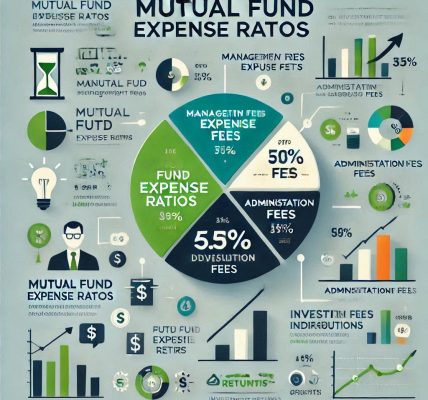Introduction
Retirement planning is an essential part of financial management, ensuring that you have a stable and comfortable life after your working years. With increasing life expectancy and rising inflation, securing a sufficient retirement corpus is more important than ever. Mutual funds have emerged as one of the best investment vehicles to build wealth systematically over time. But how exactly do mutual funds fit into your retirement plan? Let’s explore the role of mutual funds in retirement planning and why they are an excellent choice for securing your future.
Why Mutual Funds for Retirement Planning?
Mutual funds offer various advantages that make them ideal for retirement planning:
- Diversification – Mutual funds invest in a broad range of assets, reducing risk and providing a balanced return.
- Professional Management – Fund managers make informed investment decisions, which is beneficial for those unfamiliar with financial markets.
- Liquidity – Most mutual funds allow investors to redeem units when needed, providing flexibility in case of financial emergencies.
- Tax Benefits – Certain mutual fund investments offer tax deductions under Section 80C of the Income Tax Act in many countries.
- Systematic Investment Plans (SIP) – Investors can contribute small amounts regularly, making disciplined investing easier.
Types of Mutual Funds for Retirement Planning
Choosing the right mutual funds depends on your age, risk appetite, and financial goals. Here are the main types of mutual funds suitable for retirement planning:
1. Equity Mutual Funds
- Best for young investors with a long investment horizon (20+ years).
- Higher risk but also higher potential returns.
- Includes Large-cap, Mid-cap, and Small-cap funds.
- Example: Investing in a diversified equity fund like an index fund or blue-chip fund.
2. Debt Mutual Funds
- Suitable for conservative investors who prefer stable returns.
- Lower risk compared to equities but lower returns.
- Includes liquid funds, short-term debt funds, and government bond funds.
- Example: Investing in a high-quality corporate bond fund for stable income.
3. Hybrid/Balanced Mutual Funds
- A mix of equity and debt, providing a balance between risk and return.
- Ideal for investors in their 40s or 50s who want moderate growth with some safety.
- Example: A dynamic asset allocation fund that adjusts exposure between equity and debt based on market conditions.
4. Index Funds & ETFs
- Passively managed funds that replicate a stock market index.
- Lower cost compared to actively managed funds.
- Suitable for hands-off investors looking for market-based returns.
- Example: Investing in an S&P 500 Index Fund.
How to Structure a Retirement Portfolio with Mutual Funds
A well-structured retirement portfolio should evolve as you age:
In Your 20s and 30s (High Growth Phase)
- Focus on equity mutual funds to maximize wealth accumulation.
- Allocate 80-90% in equity funds and the rest in debt funds.
- Consider SIPs to take advantage of rupee cost averaging.
In Your 40s and 50s (Moderate Growth & Risk Management Phase)
- Shift to a mix of equity and debt mutual funds.
- Reduce equity exposure to 60-70% and increase debt allocation.
- Consider hybrid funds for a balanced approach.
In Your 60s and Beyond (Preservation & Withdrawal Phase)
- Prioritize capital preservation and regular income.
- Allocate a significant portion (70-80%) to debt funds.
- Consider Systematic Withdrawal Plans (SWP) for regular retirement income.
- Keep a portion in liquid funds for emergencies.
Tax Implications of Mutual Fund Investments in Retirement
Understanding tax implications can help optimize returns:
- Equity Funds (Held for more than 1 year): Long-term capital gains (LTCG) tax applies above a certain limit.
- Debt Funds (Held for more than 3 years): Taxed as long-term capital gains with indexation benefits.
- Hybrid Funds: Taxation depends on the equity-debt ratio in the fund.
- Systematic Withdrawal Plan (SWP): Only the gains portion of the withdrawal is taxed.
Common Mistakes to Avoid in Retirement Planning with Mutual Funds
- Delaying Investments – The earlier you start, the more you benefit from compounding.
- Investing in the Wrong Type of Fund – Match funds with your risk profile and time horizon.
- Ignoring Inflation – Ensure investments grow faster than inflation.
- Withdrawing Too Early – Premature withdrawals can deplete your retirement corpus.
- Not Rebalancing the Portfolio – Regularly adjust asset allocation as per changing financial needs.
Conclusion
Mutual funds are a powerful tool for retirement planning, offering flexibility, diversification, and professional management. By selecting the right mix of equity and debt funds based on your age and risk tolerance, you can build a robust retirement corpus that ensures financial independence in your golden years.
Start investing today to secure your future!



